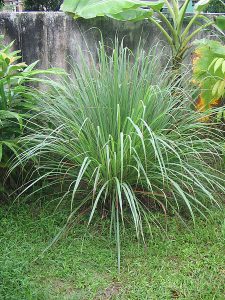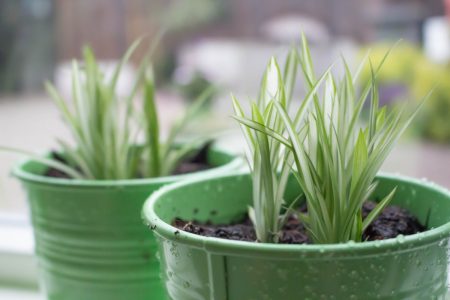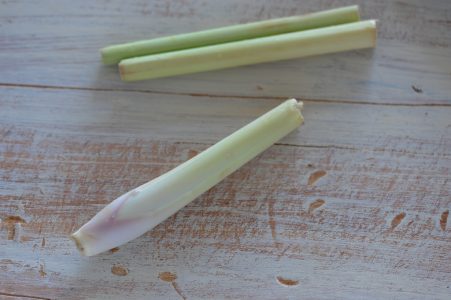 When I worked in garden centers down South there was one particular herb that was always in demand: lemongrass. I turned away customers on a regular basis because my vendors couldn’t grow enough to meet the demand. It’s such an easy, versatile plant that has many uses: culinary, medicinal and aesthetic.
When I worked in garden centers down South there was one particular herb that was always in demand: lemongrass. I turned away customers on a regular basis because my vendors couldn’t grow enough to meet the demand. It’s such an easy, versatile plant that has many uses: culinary, medicinal and aesthetic.
Then I moved to Juneau.
I was perusing my weekly availability sheet and was thrilled to find the elusive lemongrass! I ordered 2 flats of it. And it sat in the greenhouse all season. I couldn’t understand why they didn’t fly off the shelves like they would have down South. “Is it possible the fine people of Southeast Alaska simply haven’t been made aware of its wonderful virtues?”
What is Lemongrass?
So let me take this opportunity to introduce you to Cymbopogon citratus, also known as lemongrass. It’s a tall perennial grass native to India and the tropical regions of Asia, grown all over the world today. You may be familiar with it if you enjoy Asian and/or Latin American cuisine. Its light, citrusy flavor and aroma make it perfect for teas, soups and curries. But it also pairs quite nicely with fish, seafood, poultry and many meats.
Health Benefits
Lemongrass reportedly has many health benefits which make it a must-have in every garden(1). It is packed with essential vitamins such as vitamin A, vitamin B1 (thiamine),vitamin B2 (riboflavin), vitamin B3 (niacin), vitamin B5 (pantothenic acid), vitamin B6 (pyridoxine), folate and vitamin C. It also provides essential minerals such as potassium, calcium, magnesium, phosphorous, manganese copper, zinc and iron. Additionally, it offers no harmful cholesterol or fats.
It is packed with essential vitamins such as vitamin A, vitamin B1 (thiamine),vitamin B2 (riboflavin), vitamin B3 (niacin), vitamin B5 (pantothenic acid), vitamin B6 (pyridoxine), folate and vitamin C. It also provides essential minerals such as potassium, calcium, magnesium, phosphorous, manganese copper, zinc and iron. Additionally, it offers no harmful cholesterol or fats.
The main component of lemongrass is citral (2), which not only provides its distinct lemony smell, but also has anti-fungal and anti-microbial qualities (3). Some of the most well-known health benefits of lemongrass include:
Lowers cholesterol(4,5)
Aids in digestion and the prevention of stomach disorders(6)
Fights infection(7)
Alleviates symptoms of anxiety and fatigue(8)
As if this wasn’t enough, research is showing that lemongrass may also prevent the growth of cancer(7) and treat type-2 diabetes(9)
How to Grow It
 So now that I’ve convinced you to grow lemongrass you may be asking “How?” It grows in rich, well-drained soil and full sun. They prefer a steady supply of moisture, so don’t let the roots dry out between waterings.
So now that I’ve convinced you to grow lemongrass you may be asking “How?” It grows in rich, well-drained soil and full sun. They prefer a steady supply of moisture, so don’t let the roots dry out between waterings.
Lemongrass does best in regions 8-11, but you can grow it in pots (24 inches or larger) in a greenhouse. Be sure to bring a little indoors as a houseplant; then you can enjoy the lemony fragrance throughout the long, dark winter. Dig up a few stalks, trimming them down to just a few inches tall, and pot. Place them in a bright, south-facing window and keep soil barely moist.
Another option is to store a pot of lemongrass, trimmed down to just a few inches tall, in a cool, dark place like a basement. Water just a few times over winter to keep roots alive. In spring, bring the pot into a bright spot, and resume normal watering. Shift outdoors when temperatures are above 40 °F.
Harvesting
The last piece of information is how to use the lemongrass now that you’ve got it growing. You can start harvesting once  a plant is established- about 3-4 months after planting it. You want to keep your lemon grass well pruned in order to encourage consistent harvests. The stalks look similar to green onions, and the bulbous end of the base of the stalk is the edible part. Cut off the roots, peel off the tough, dry outer sheath. Slice and use immediately or store in a plastic bag in the freezer. You can also dry the leaves. Dried lemongrass retains its flavor for up to one year if properly dried and stored.
a plant is established- about 3-4 months after planting it. You want to keep your lemon grass well pruned in order to encourage consistent harvests. The stalks look similar to green onions, and the bulbous end of the base of the stalk is the edible part. Cut off the roots, peel off the tough, dry outer sheath. Slice and use immediately or store in a plastic bag in the freezer. You can also dry the leaves. Dried lemongrass retains its flavor for up to one year if properly dried and stored.
I have attached a link to some great lemongrass recipes. I hope you found this post helpful. Enjoy!
https://www.epicurious.com/ingredients/14-ways-to-use-lemongrass-gallery/list
*all photos were taken from Google images, labeled as free to use or share